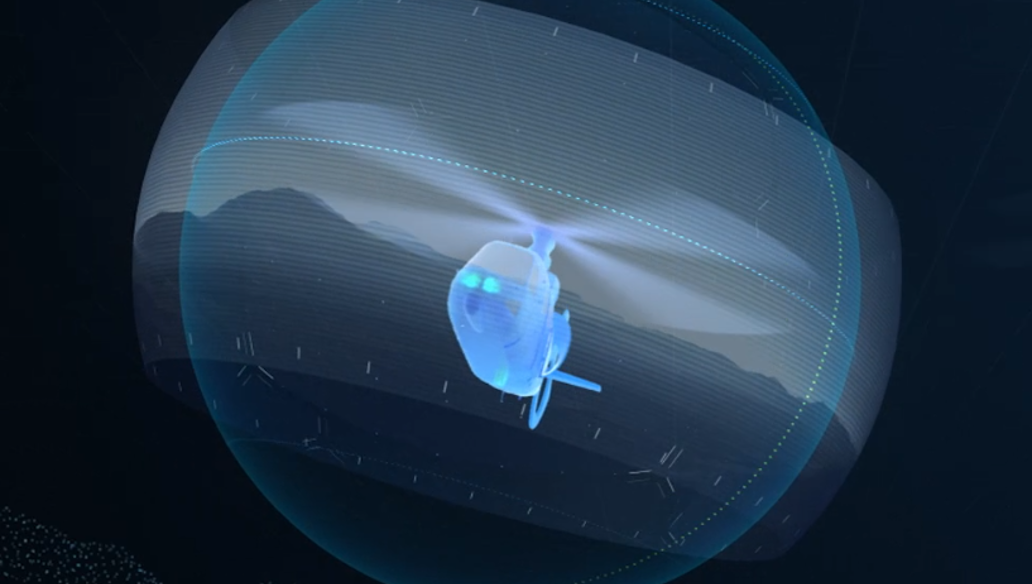
Interview by Jon Lake – Asian Military Review interviews Michelle Moholt, Technical Director within Raytheon Intelligence & Space.
Raytheon Intelligence & Space is using the technology developed for the Electro-Optical Distributed Aperture System (EO DAS) to develop a versatile and modular derivative for a host of aerial platforms.
Enter RDAS
The Raytheon Distributed Aperture System is an airframe agnostic sensor suite that is tailorable to multiple platforms. According to Michelle Moholt they’ve leveraged a lot of the hardware and the technology from EO DAS and advanced it to the air-cooled configuration while also adding laser warning, active focus and an inertial measurement unit to the system.
Being air-cooled means that the aircraft does not have to provide additional cooling and has allowed RI&S to reduce size, weight and power (SWaP) requirements, to reduce cost and to broaden the range of platforms that the system can be fitted to.
This versatility is further facilitated by the open architecture, platform agnostic (Common Open Secure Mission Computer) processing element that hosts the RDAS software and firmware.
“This mission computer serves as the connective tissue across all of the different sensors that are hosted on a given platform,” Moholt explained.
“It was developed using model-based systems engineering and gives us the ability to adapt the design. It is Sensor Open Systems Architecture aligned so we can upgrade obsolescence issues quickly and then rapidly deploy different configurations for different platforms. It’s all about getting capability out to aircrews and operators as fast as possible. What’s more, we continue to reduce the size, weight and power requirements at the same time we optimize processing efficiency.”
The number of RDAS sensors can be scaled up and down, ranging from four to eight, based on the platform. “It comes down to the needs of the aircraft,” said Moholt. “Not every customer requires360-degree spherical coverage … some only need video/pilotage capabilities for flying at night at a low level.”
RDAS employs a large focal plane array that boasts best-in-class detection range and resolution, even in cluttered environments, and uses multiple high-resolution infrared sensors mounted around a platform to produce up to a continuous 360-degree spherical image.
RDAS effectively turns night into day, “In essence eliminating the need for night vision goggles while in the aircraft,” she said. It also has passive missile detection capability – autonomously detecting, locating, tracking, and warning of any incoming threats that have an infrared signature.

“Knowing whether they’re friendly or adversarial forces and keying up appropriate countermeasures further amplifies aircrew situational awareness,” Moholt said.
The system’s high visual acuity and fast processing power can aid pilots by providing obstacle avoidance even in the most cluttered environments, enhancing platform survivability.
Moholt told Asian Military Review that rotary and future vertical lift were other potential applications for RDAS and COSMC, and that the employment of these systems would provide these kinds of platforms with a “technology and survivability advantage.”
“The reduced size, weight and power of the sensor really makes it a viable solution for those unmanned aerial systems and rotary crafts,” she said.
Another perhaps particularly strong potential market for RDAS is the fast-jet combat air sector. The platform-agnostic RDAS requires no cooling from the platform, less electrical power and thereby offers the potential to simply upgrade fourth generation fighter aircraft types with F-35-like capabilities.
Raytheon Intelligence & Space is on track to have this capability to the customer by 2024 and is also looking at integrating RDAS with the company’s electronic warfare system, radars and situational awareness tools to provide an increased battlespace advantage for aircrews and operators.
by Jon Lake












